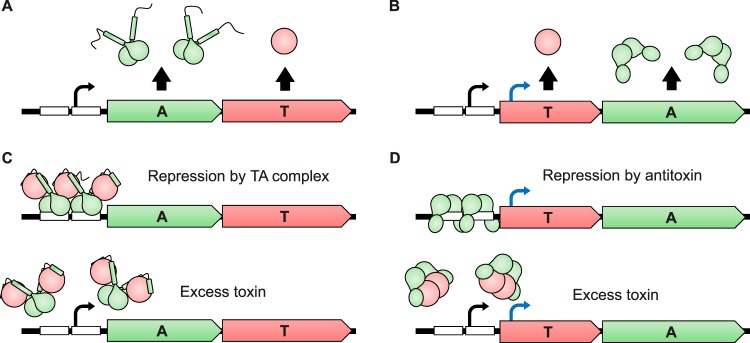FIG 3.
Transcriptional regulation of type II TA systems. TA genes, as well as proteins, are represented in red (toxins) and green (antitoxins). (A) Transcription of canonically organized TA systems. The whole operon (antitoxin-toxin) is transcribed by a single autoregulated promoter. A lower translational efficiency of toxins ensures a molar excess of antitoxin. (B) Transcription of reverse-organized TA systems. The whole operon is generally transcribed by a single autoregulated promoter (black arrow). A molar excess of antitoxin is ensured through its exclusive transcription by other promoters (blue arrow). (C) Conditional cooperativity. Unsaturated toxin-antitoxin complexes tightly bind their operators (white boxes) to repress transcription. A molar excess of toxin leads to the formation of saturated complexes that do not bind their operators, leading to derepression of the promoter, transcription of the operon, and de novo antitoxin synthesis. (D) Repression of reverse-organized systems. Excess antitoxin binds operators (white boxes) to repress transcription of the whole operon while the antitoxin gene is still transcribed. A molar excess of toxin displaces the antitoxin from its operators, leading to derepression of the autoregulated promoter (black arrow) and transcription of the whole operon.

